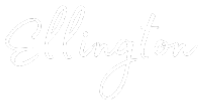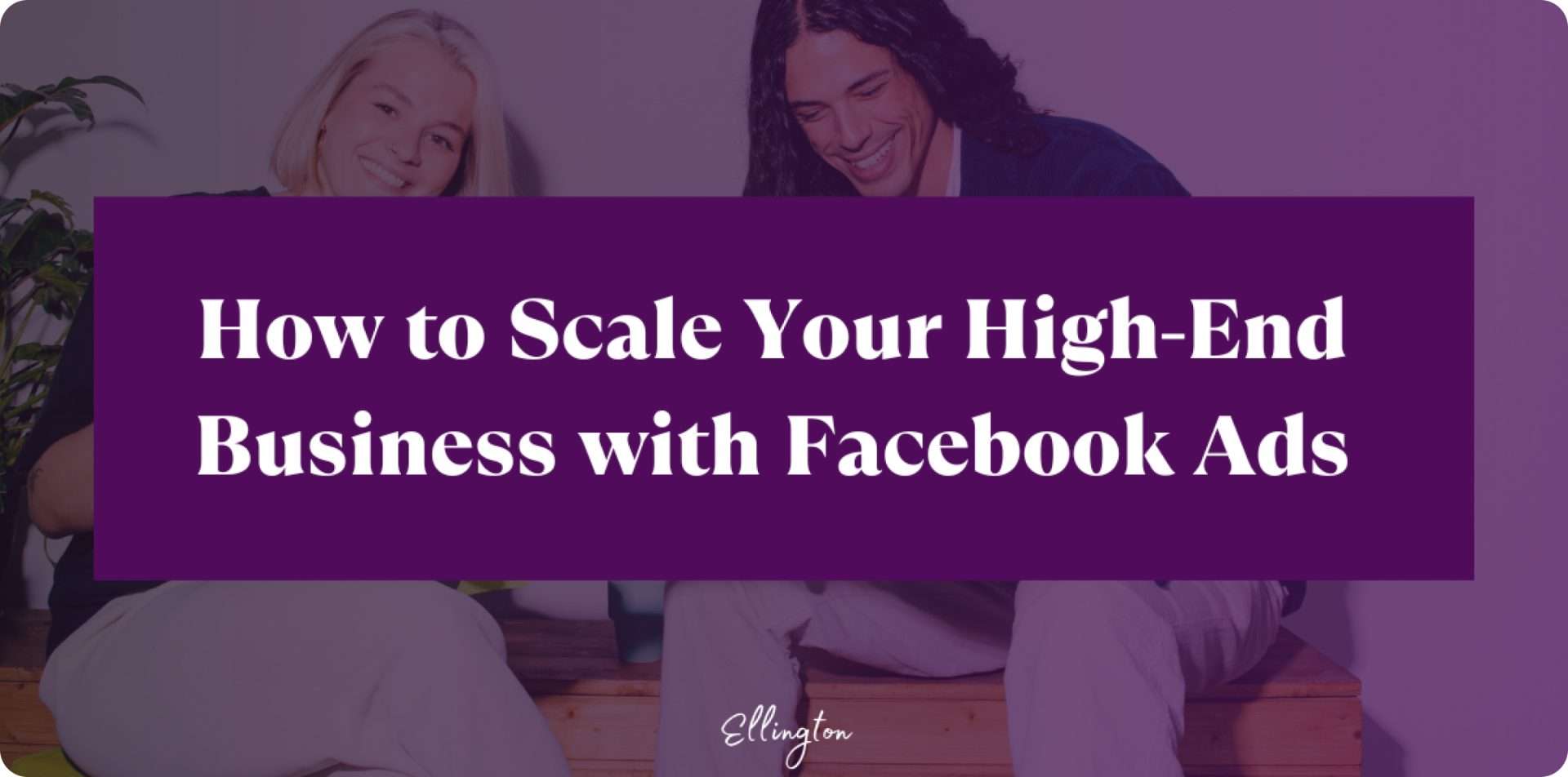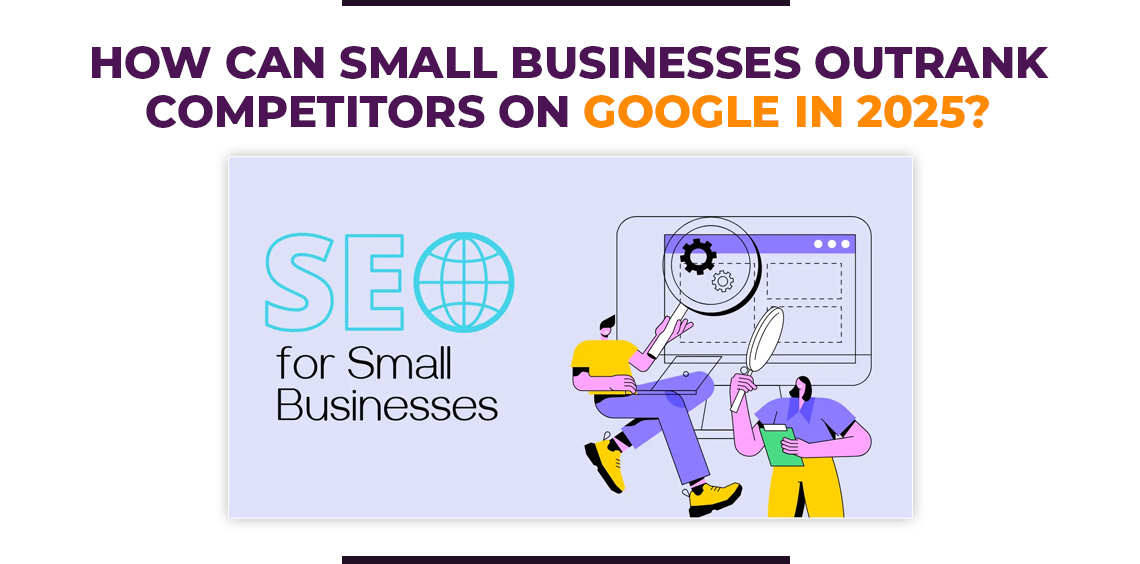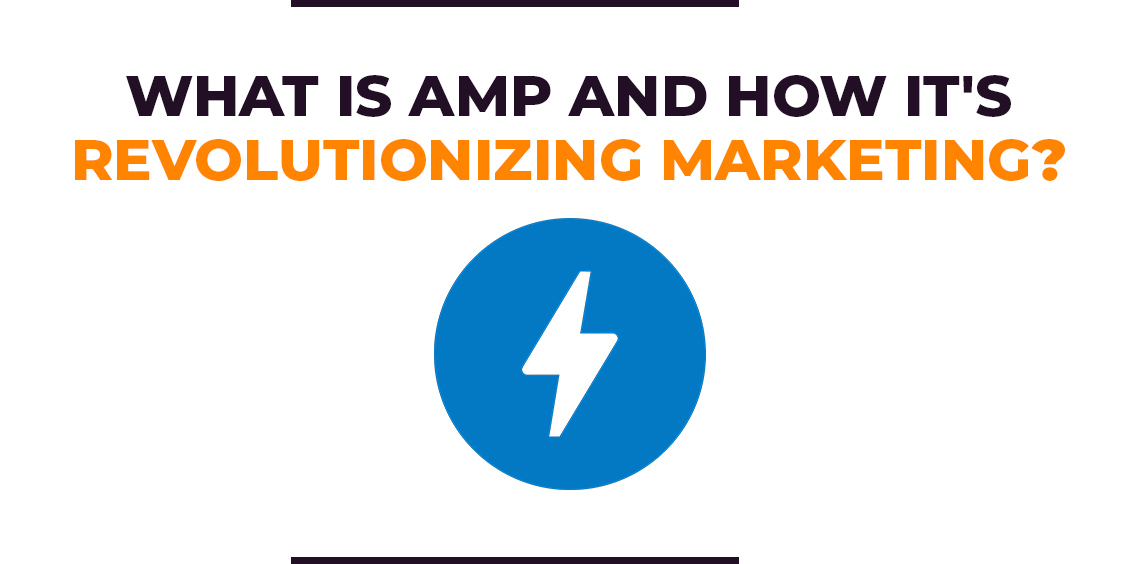Hi everyone, I’m Jay, Founder and CEO of Ellington Technologies, a full-service marketing agency that has managed over $100 million in ad spend.
Today, I want to share insights into how we’ve achieved outstanding results for our clients using Facebook ads, and how you can do the same.
Table of Contents
ToggleKey Takeaways:
- Creative is king: Invest in high-quality ad creative to maximize your campaign’s potential.
- Track your results: Utilize web events, conversion tracking, and pixels to understand your campaign performance and optimize accordingly.
- Landing pages matter: Design landing pages that offer value and guide users toward conversion.
- Consider webinars: For B2B businesses, webinars can be a powerful lead generation tool.
Creative Is King
One of our key marketing strategies for Facebook advertising is creating compelling content. We believe that creativity is responsible for about 65% of an ad’s success. We’ve been recognized by Facebook multiple times for our high-performing campaigns, even for clients with high-ticket products.
In the image below, this client’s average ticket sale is between $250,000 to $500,000. Imagine getting leads at only $24 with such a huge margin!

For instance, we worked with a client selling expensive medical laser technology costing hundreds of thousands of dollars. Through strategic targeting and engaging ad creatives, we were able to acquire potential buyers at a cost of only $23.99 per lead.
Beyond creative, we also emphasize the importance of setting up web events and conversion tracking within Facebook. At a minimum, ensuring a Facebook pixel is installed on your website is crucial for tracking user behavior and optimizing your campaigns.
Track Your Results:
The best way to do this with Facebook Ads is to set up custom events for key performance indicators (KPIs) you care about.
Here’s an example of custom events we built for a client of ours for their retargeting campaign to track key conversions.

You’ll notice that these events track about every step of the process. Here’s a sequence of events:
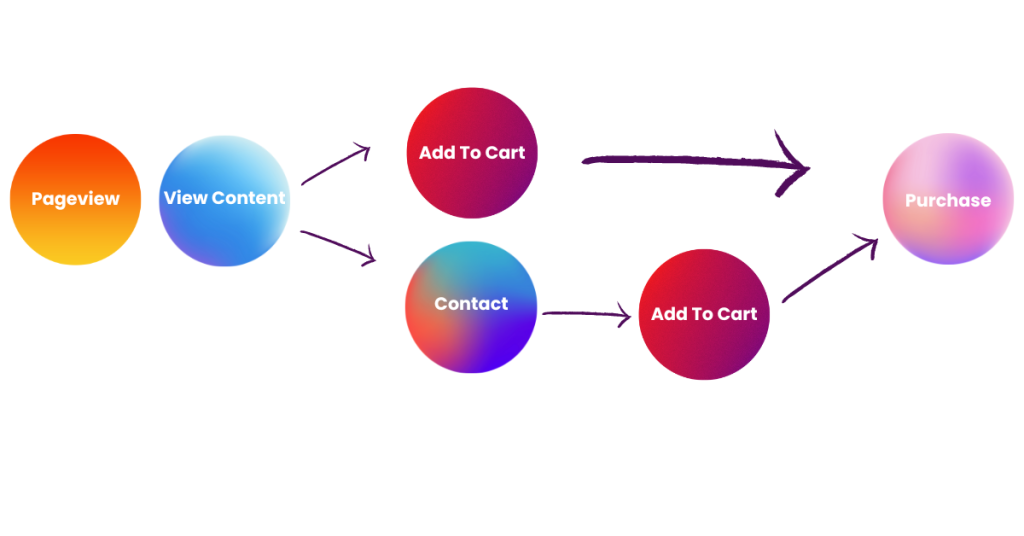
First, the customer will see your ad and decide whether or not they’d like to engage with it.
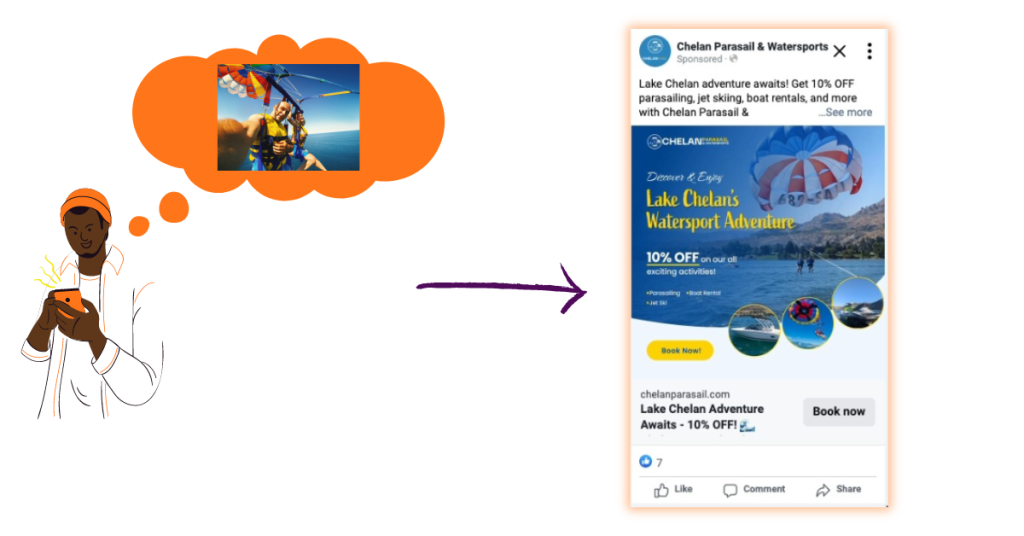
By clicking the ‘Book now’ button on the ad, the customer will be forwarded to the landing page. This would be the page view step.
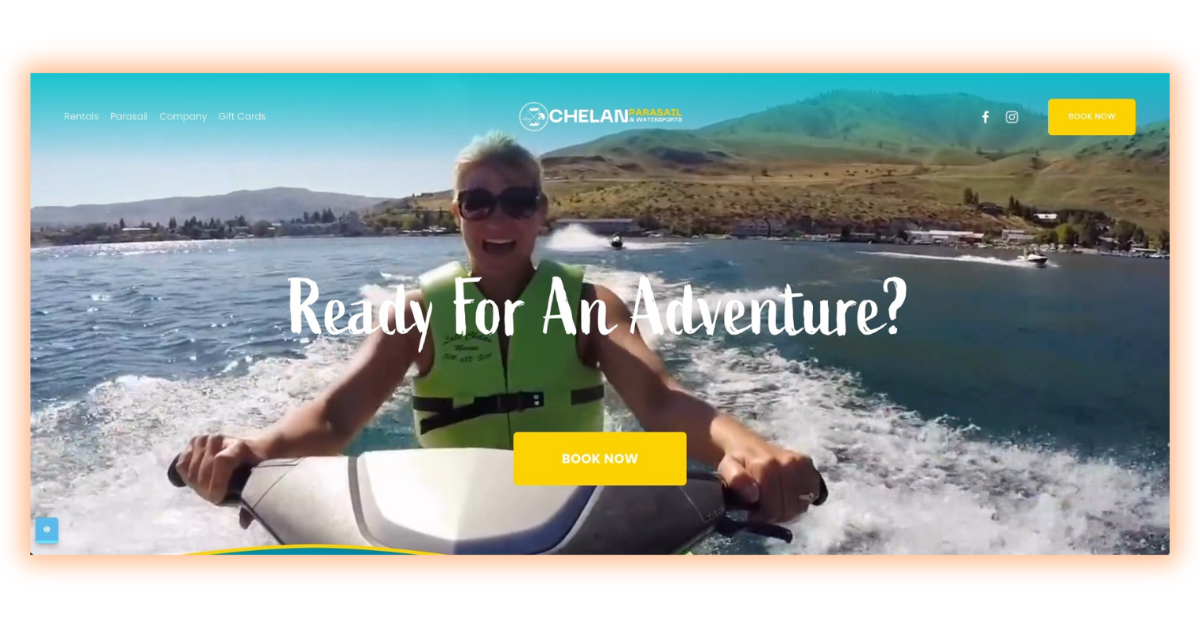
Clicking the ‘Book now’ button on the landing page will trigger the ‘View Content’ event indicating they’ve viewed the services being offered.

Once the customer chooses a service they’re interested in and proceeds with making a purchase, the ‘add to cart’ event will be triggered just before a purchase is made.
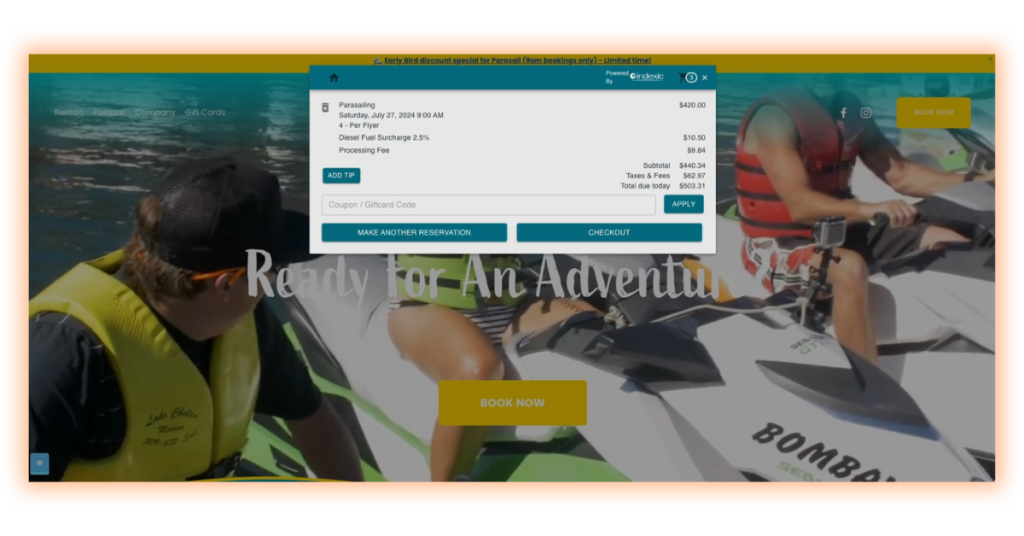
And, the obvious next step is for the customer to purchase a service. Whether or not they make the purchase, their data (cookies) will be tracked.
How is Facebook able to track the data?
Great question. Understanding how Facebook tracks user data is crucial for optimizing your ad campaigns. There are two primary methods Facebook uses to track user behavior and actions:
1. Browser-Side Tracking:
- Facebook Pixel: This small piece of code, embedded in your website, allows Facebook to track user actions like page views, button clicks, and purchases. It enables you to measure the effectiveness of your ads, retarget website visitors, and build custom audiences based on specific behaviors.
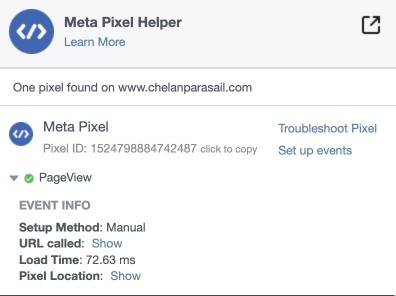
This is a Google Chrome extension called ‘Meta Pixel Helper’ which allows you to identify if a website has a pixel for cookie tracking.
- Cookies: Facebook utilizes cookies, which are small text files stored on a user’s device, to track their browsing activity across different websites and apps. This allows Facebook to build a comprehensive profile of the user’s interests, preferences, and demographics.
2. Server-Side Tracking:
- Facebook Conversions API (CAPI): This server-to-server connection allows you to send website event data directly to Facebook without relying on the pixel. This provides more accurate and reliable tracking, especially for events that might be missed by browser-based tracking due to ad blockers or privacy settings.
- Offline Conversions: CAPI can also be used to track offline conversions that happen outside of your website, such as in-store purchases or phone calls. This helps you understand the full impact of your Facebook ads on your business.
The Importance of Tracking
By understanding how Facebook tracks data, you can leverage this information to create highly targeted ad campaigns, optimize your ad spend, and measure the success of your marketing efforts. By implementing both browser-side and server-side tracking, you can ensure that you’re getting the most accurate and complete picture of your audience’s behavior.
High-Converting Landing Pages: The Key to Success
In addition to ad campaigns, we specialize in building high-converting landing pages. A well-designed landing page is essential for turning clicks into customers. We strategically place call-to-action buttons and lead forms near the top of the page to capture leads early in the user journey. We also ensure that the page provides valuable information and social proof to encourage conversions.
I often see brands running ads directly to one of their web pages with no clear call-to-action, no funnel in mind, and no real value prop. That is a huge mistake.
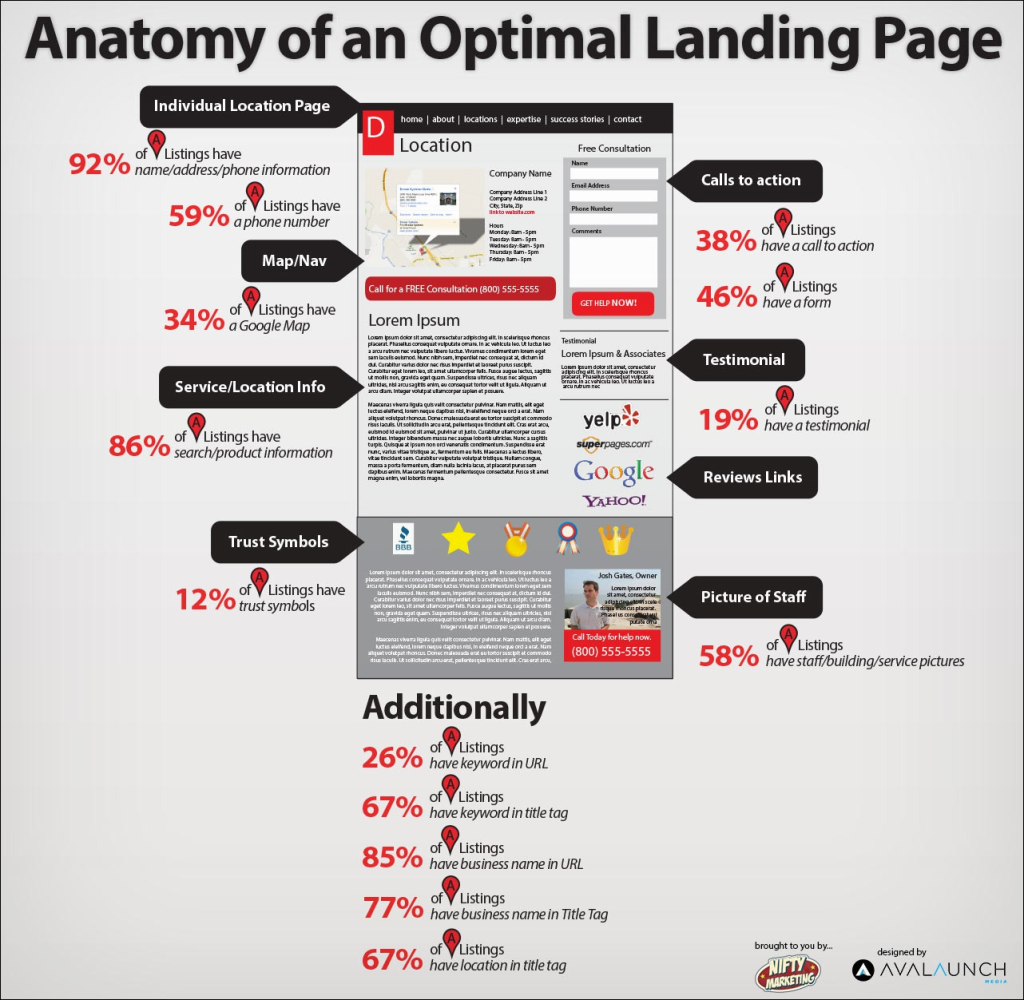
Anatomy of an Optimal Landing Page – source
What Makes a Landing Page High-Converting?
A high-converting landing page isn’t just a visually appealing webpage; it’s a meticulously crafted conversion machine. Here’s what sets them apart:
- Clear ValueA high-converting landing page isn’t just a visually appealing webpage; it’s a meticulously crafted conversion machine. Here’s what sets them apart:
- Proposition: The headline and subheadline should instantly communicate the unique value you offer. What problem do you solve? What benefit do you provide?
- 90% of visitors who read headlines also read the call to action copy.
- Compelling Call-to-Action (CTA): The CTA button should be prominent, visually appealing, and use persuasive language that encourages action.
- I recommend having one clear call-to-action message per landing page while also keeping your CTA buttons front and center.
- Concise and Relevant Content: Focus on the most important information. Use clear, concise language that speaks directly to your target audience’s pain points and desires.
- Social Proof: Showcase testimonials, case studies, or reviews from satisfied customers to build trust and credibility.
- POSist, a leading SaaS company, tested including social proof to its landing pages and increased conversions by 5%.
- Mobile Optimization: Ensure your landing page looks and functions flawlessly on mobile devices, as a significant portion of the traffic comes from mobile.
- A/B Testing: Continuously test different elements of your landing page (headlines, CTAs, images, layout) to identify what works best and optimize your conversion rate.
Here are some other landing page tips backed by data:
- Landing pages with videos can increase conversions by 86%.
- Long landing pages can generate 220% more leads than short landing pages.
- Only 20% of people remember what they read. However, 80% of them remember what they see.
- As page load time goes:
- 1 second to 3 second – the probability of bounce increases by 32%.
- 1 second to 5 seconds – the probability of bounce increases by 90%.
- 1 second to 6 seconds – the probability of bounce increases by 106%.
- 1 second to 10 seconds – the probability of bounce increases by 123%.
Consider Webinars
When it comes to promoting high-ticket products or services, especially in the B2B space, webinars are a game-changer. They offer a unique opportunity to engage potential customers, build trust, and showcase the value of your offering in a more in-depth way than ads alone can achieve.
Why Webinars Work for High-Ticket Offers
Check out these stats and you’ll see why you’ll want to give webinar a shot for your business (source):
- Webinar registration page conversion rate can be up to 59%.
- The average conversion rate from viewer to buyer is 55%.
- 91% of B2B professionals say webinars are their preferred type of content.
- B2B marketers rank webinars as the #2 best-performing content format.
- B2B marketers consider webinar lead quality to be ‘above average’.
- 68% of surveyed marketers could tie webinars to revenue. 75% of them said webinars lowered their cost-per-lead. 38% rated webinars lead a 4 or 5 on a five-star scale, and the average rating was 3.3/5.
Conclusion:
Tons of information here. I hope you find all of it helpful for you and your business.
